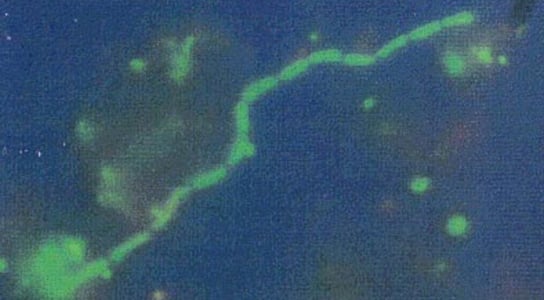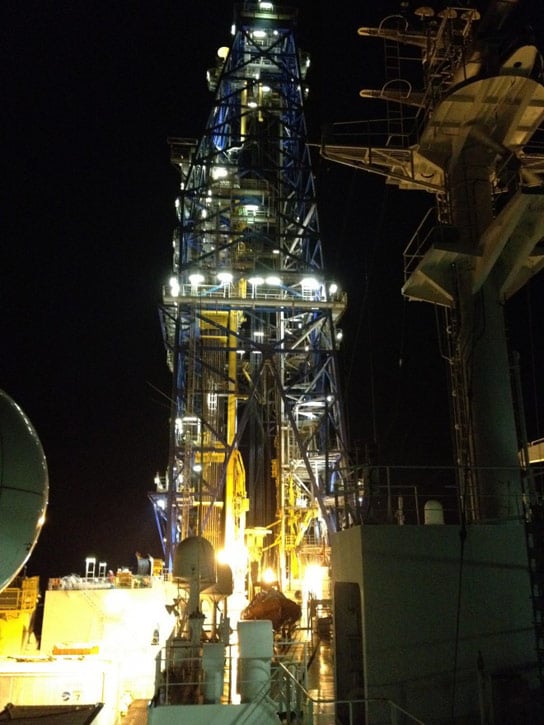Deepest Scientific Marine Samples Ever Collected Show Hints of Life
November 19, 2012

Image by Shelly Carpenter, NOAA Ocean Explorer
A recent expedition resulted in a new world record for deepest scientific marine drilling, 2,440 meters beneath the seafloor. The Research Vessel Chikyu off the coast of Japan’s Shimokita Peninsula housed the members of the microbiology team that took part in groundbreaking leg of the Integrated Ocean Drilling Program.
Once the cores started coming up, the samples were processed and some evidence of life was found. They found some clues in the relative ratio of C1 to C2 compounds. This is a good proxy for life because if you’re just thermally producing methane from breaking down a complex organic substance by heat, you would get multiple sizes of organic compounds. But if biology is breaking it down, microbes will produce more C1 compounds because it will break everything down to that lowest level – methane, carbon dioxide, and those sorts of products.
There is an indication of a high C1:C2 ratio in these deep samples and there is also an indication of microbes attached to sediment particles that are believed to have come from the deep subsurface.
With drilling operations, there is always a risk of contamination and one of the main parts of the microbiology on board was to look at contamination. The research vessel relied on an automated counting microscope to count cells. However, the cells were so small and few that it was hard to get the computer to do it. The procedure now has to be redone in land-based labs, where they have specific clean rooms.

The Japanese Research Vessel Chikyu’s drill rig illuminated at night. Image credit: Elizabeth Trembath-Reichert
No comments:
Post a Comment